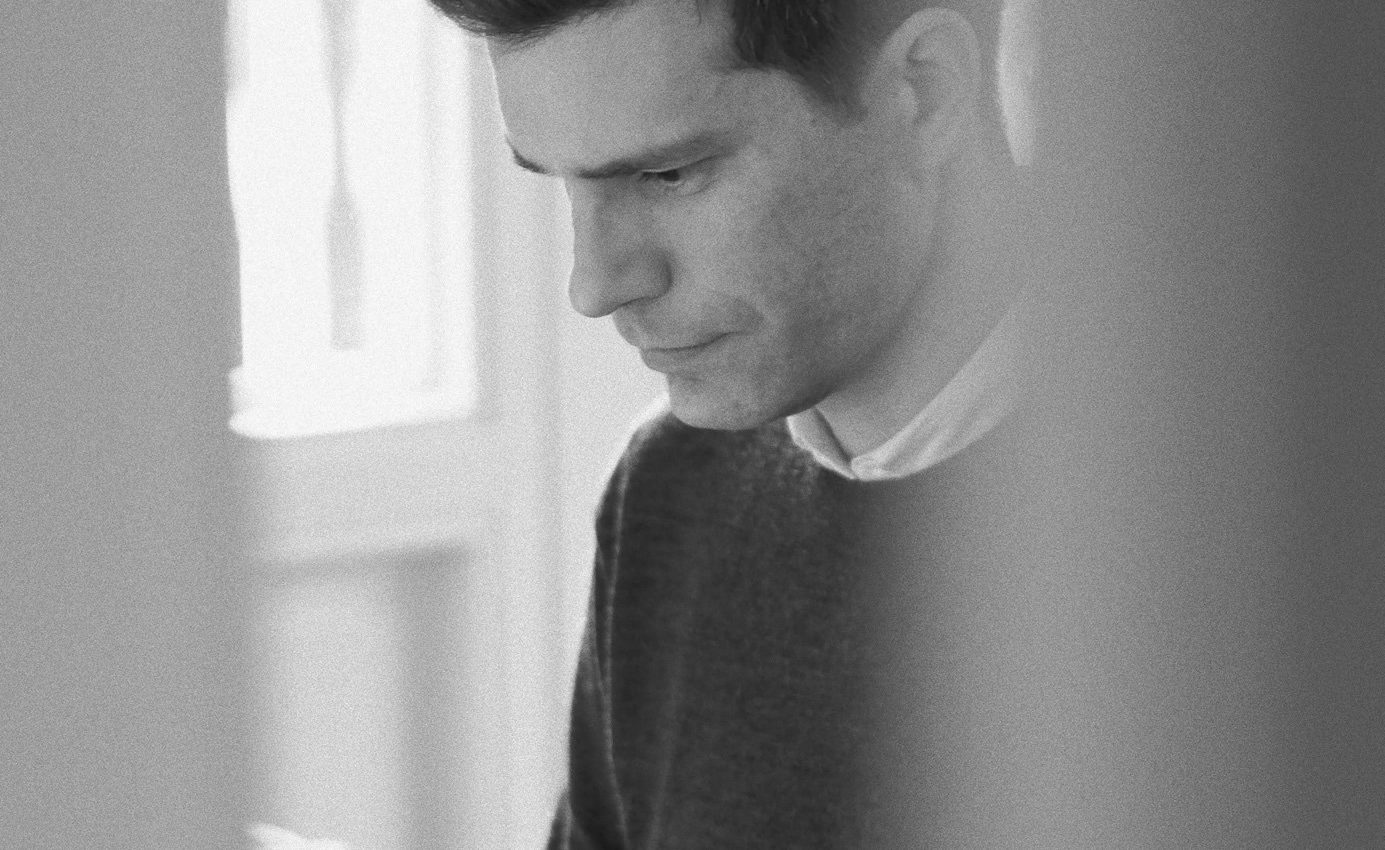Samuel Andreyev is a composer, author, professor at the Hochschule für Musik Freiburg and host of the Samuel Andreyev Podcast. His chamber, orchestral, vocal and solo works have been performed, recorded and broadcast throughout the world.
Andreyev is an inspiring example of an artist who uses a systematic approach to creation within which ideas evolve as musical objects, and, refined through several critical stages, reach completion by being nurtured by his disciplined practice. The nurturing of a creative space is a fundamental requirement for any artist to maintain creative output. An artist does, so output is king, and with output comes growth. After all, artistic progress is the lifeblood of art–but for that to happen, as Andreyev describes, you have to make a start.
Originally interviewed for Trebuchet’s issue 11 on process, here is part one of the extended transcript where Andreyev speaks in depth about his creative process.
Can you explain your process of composing music?
The first thing is you start with a desire to write. And then you channel that desire into something real by setting up a sustainable practice. What that means is you have a way of fitting your work into your life, that you can iterate across time. For me, this is the crucial thing.
Another way of putting it is that it’s about learning how to work, fundamentally. That might seem like an easy or an obvious thing. But I work with lots of students, and I’ve had this experience myself, that learning how to work is by no means a simple thing when you’re a creative person. So all the rest is empty talking unless there’s a real solid understanding of what that means. What it means for me is every single day, unless I’m unwell or something, but barring any exceptional circumstances I’m at my desk writing. I’m 40 years old now and it’s taken me a long time to sort out how much time I can spend writing. So I’m likely to have a positive experience with it. I’m not driving myself to exhaustion, but I’m also not letting myself off the hook too easily. It took an amazingly long time to sort that out.
When I was in my 20s it was definitely less consistent. So I had a lot of unformed ideas about what working entailed at that time. So for example, I would imagine to myself, I’ve got the entire day to write. So I didn’t, I wouldn’t have a schedule, I would just say, Oh, I’ve got the whole day. So probably everybody knows what that means. When you think you have the whole day to write. It’s actually not true. When you’re engaged in difficult creative work that demands, really incredible amount of focus. You can’t sustain that for 16 hours without a break and have it be at a high level the whole time.
Perhaps it’s easy not to realise this when you’re 20 because you can stay up all night and have an irregular schedule and, and you can kind of bounce back. But now I work very differently. I try to make sure that my mornings are free, so that I can prioritise the writing and get down to work. The other side to it is, once you sort out how to work and establish a habit around that that is sustainable, then you have to build up a repertoire of methods, or problem solving or troubleshooting processes that allow you to keep the work flowing, even if you run into a significant difficulty.
For example?
I don’t know if the ideas originated with me necessarily, but I’ve made them mine by integrating into my work process. One thing that’s really helpful is remembering that the last thing that you finished, you probably didn’t tie up all the loose ends in that piece. There are probably some aspects of it that you could take farther, or that you could develop more. You have to keep an eye on those dangling threads in your last project. Ask yourself; what are the things that you’ve just started to initiate in the piece or that could form a secondary or peripheral aspect of another take on the piece. It’s a way of acknowledging that the page is never completely blank. You’re never actually sitting in front of a blank page, because there’s this residue of your previous projects, that is going to colour whatever you do next. So that’s one example, if you ever really feel like you’re not sure what to do. Look at what you did previously.
Other times, often what happens is you make a plan – you have this idea about what you’re going to do in your piece – but what you actually end up doing is not exactly that. So new ideas emerge out of that process, organically. When you do something that isn’t what you set out to do. Which happens all the time. Because it certainly isn’t as though I just decide one day ‘here’s what I’m going to do in my next piece’ and then I sit down and do it for the next six months. It never works that way. There are accidents all along the way. There are unexpected problems that come up that require unanticipated solutions.
Probably the hardest thing in composition is conceiving a musical trajectory. In other words, a sense of movement. And that is really fundamental to the art of composition. It’s not so much about materials per se. I don’t think that when we listen to music we’re listening to materials, it’s more that when we listen to music, we’re listening to patterns. And in patterns we’re listening for movement. The materials are simply the vehicle that allow that movement to manifest itself. But right there there’s a danger, which is that you can fall in love with your materials. As a composer when you start to think that they’re enough that’s the point where you can get into trouble.
You could imagine thinking that a timbre or a particular sonic footprint is enough and that you’ve solved the problem with the piece because you found some interesting sounds. But it doesn’t work. Or at least it doesn’t work for me because it’s not enough to carry a sense of movement. Describing a musical trajectory as a composition is a harder thing because it’s more abstract. It’s something you have to be able to take an intuition and project it through musical time which is really difficult to do.
Do you think all music is abstract or that it always reflects, consciously or not, a natural structure?
I would say that, to some extent, all music is abstract, but some music is more embedded in extra-musical things that make them more easily relatable. So for instance, if you have a pop song, pop songs have words. So the words might immediately give you something very familiar. They might relate a narrative, a story, a personal experience, and the sentiments that they express might be universal sentiments. So through the words and a pop song, you can immediately enter into that world and it might feel very concrete.
The other thing is, a lot of music around the world has a religious or ritualistic function. So the music slots into that context and you don’t simply sit down and listen to it silently as in a concert hall. Which is the way that we might be accustomed to doing in the West, in other places the music would be part of a rich sensory experience that would involve dancing and singing, and costumes, and maybe a theatrical dimension. And so you can’t extract the sounds from that context. So I don’t think my music is any more or less abstract in a sense than what you might find in other types of music. But I do also recognise that the context in which it might be heard places more demands on the listener to fill in the missing context that they might not have.
How do you define ‘theme’ in your music? Or do you?
‘Theme’ is a pretty specific technical term in classical music. The theme is a melody, usually a fairly short one, that is amenable to various forms of development over the course of the piece. So it usually has to fulfill a few requirements. It has to be something memorable. It should be fairly short and fairly simple. Because if you start with something really complicated, then the range of things that you can do to it and still have it be recognisable is limited.
Once you get into the late 19th century, it starts to dissipate. Actually, even earlier than that because one of the things that happens in the 19th century in music is that the themes start to get shorter. Because composers were moving away from repetition, away from the neutral material that you get sometimes in Mozart, where you have scales, for example, and arpeggios and other figures like that, that are relatively neutral figures. And Mozart’s music actually contains a fair bit of repetition. So as a sort of evolutionary contrast in the 19th century, we see composers moving away from that, and having less and less repetition in their music, more condensation. More compression of the musical idea and as a result the idea of theme starts to, I wouldn’t say it vanishes, But it starts to turn into a different conception, which is more like a musical cell. Something that you might describe as being the smallest entity in a piece that is able to carry any kind of meaning. So in other words, the theme might no longer be a four bar melody, bracketed by cadences. It might just be a few notes or it might be a motif or it might be something really quite tiny.
In the case of my own work I don’t feel particularly close to The Classical Period per se, I probably am closer to Baroque and pre-Baroque music in terms of where I might situate my own lineage. And then also particularly to early 20th century music. So melody is incredibly important to me. But not this idea of short, mainly symmetrical, memorable little tunes, which is how I would think of the term theme.
Going back to the change from the Classical to the Modern period the question could be phrased as, what changed after Schoenberg. So, in general if you look at how Modernism affected the arts, generally, one thing that you can see is that artists are starting to make really quite considerable demands on their audience. If you are a lover of contemporary fiction, and you’ve read Jane Austen and the Brontës and and then you pick up a copy of Finnegans Wake, you’re going to have to work pretty hard to read that book. You might not just be able to sit down and turn the pages and read it from start to finish the way you would read a ‘normal’ book. That’s an extreme example, admittedly, but it’s not a unique example. And in terms of music, one of the things that starts to happen is that the standard recital or concert situation in which you sit down and hear a bunch of different pieces of music, I would argue, starts to become inadequate.
In terms of the demands, composers are starting to place upon their audience. So for example, if you’re living in Vienna in 1912, and you’re accustomed to hearing Brahms, Wolf and Schubert recitals, and you hear some of the earliest Schoenberg piano pieces, those pieces are going to be so difficult because there’s very little repetition in them. The language will be unfamiliar, a lot of the things that traditionally would hold a classical piece of music together, such as obvious rhythmic patterns, a tonal hierarchy and so on, those things are going to be absent. And it’s totally asymmetrical, and so on and so forth. That’s going to be really hard for you to listen to and in one sense shouldn’t be recognisable. Just sitting down in a recital and hearing it once is not going to be enough, you’re going to need to probably hear the piece multiple times in order to get a sense of what’s going on in it. So we come to the real problem. This is not something that you can just brush aside and say, ‘Oh, well, the audience just has to work harder’ it’s worth acknowledging that a lot of people aren’t going to be able or willing to do that. But I’m also not saying well, then composers should just write easy music so that that problem goes away. It’s a genuine problem in the sense that we don’t know what to do about that.
But what made music of this sort even possible? There’s no question that the Industrial Revolution, and also the advent of sound recording, profoundly changed things, not only for audiences, but also for composers. It meant that audiences suddenly had a vast array of music that they could choose from. It also meant that composers could indulge in the development of highly idiosyncratic styles which enabled an incredible stylistic acceleration. And, again, like art, the development of compositional technique where things just started to move, and move on, quickly. So on the one hand, you could say that sound recording and the ability to get a recording of a piece and listen to it multiple times is the answer. But it’s also the thing that caused the problem to occur in the first place. So it’s kind of a catch-22.
For myself, it’s extremely important that the pieces be heard and that they be accessible to everybody. And I’ve devoted a great deal of energy and effort over the years to making sure that that’s the case for every piece I write.
What that means in practice, is I don’t consider a piece to be properly finished, until it’s been composed, published, performed and…
Read more in Trebuchet 11: Process
Featuring: Samuel Andreyev / Ed Atkins/ Nairy Baghramian / Phyllida Barlow / Peter Van Dyck / Oli Kellett / Tae Kim / Chris Levine / Gisela McDaniel / Paul Sietsema / Jeff Muhs

The aim of art is to represent not the outward appearance of things, but their inward significance. – Aristotle





















